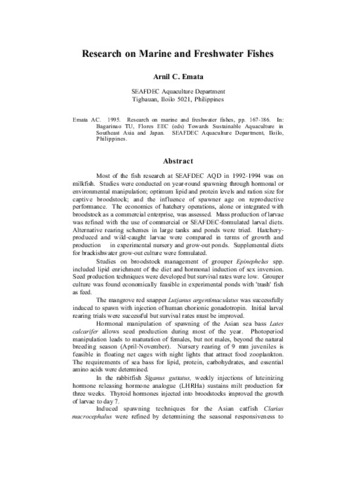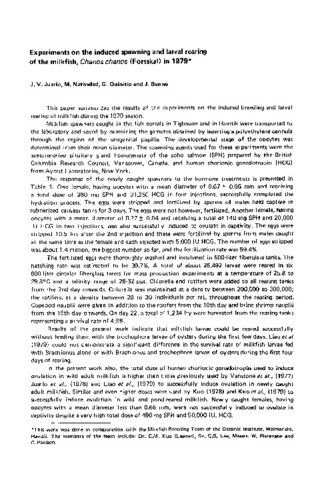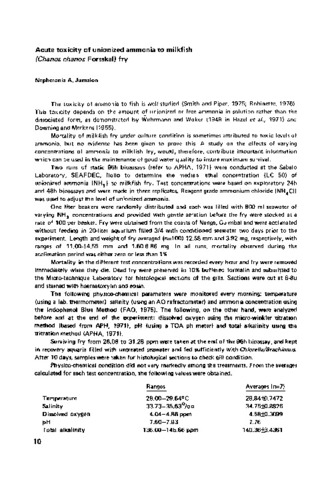Effect of feeding rate on the survival and growth of milkfish (Chanos chanos) fry in a controlled environment
- Global styles
- MLA
- Vancouver
- Elsevier - Harvard
- APA
- Help
Share
抄録
The optimum daily feed allowance varies with species, age, size, frequency of feeding, culture procedures, quality of feed and water quality. This experiment indicated that with a diet containing 40% protein and 3,450 kcal of M.E. per kg, a feeding rate of 16-20% of the biomass is optimum for satisfactory survival and growth of fry raised in a controlled environment. Increasing the feeding level beyond this value was not beneficial but in turn increased the ammonia-nitrogen concentration to a level which is harmful to the fish.
Suggested Citation
Lim, C. (1978). Effect of feeding rate on the survival and growth of milkfish (Chanos chanos) fry in a controlled environment. SEAFDEC Aquaculture Department Quarterly Research Report , 2(4), 17-20. http://hdl.handle.net/10862/2336
Type
ArticleCollections
Related items
Showing items related by title, author, creator and subject.
-
Research on marine and freshwater fishes
Emata, Arnil C. (Aquaculture Department, Southeast Asian Fisheries Development Center, 1995)Most of the fish research at SEAFDEC AQD in 1992-1994 was on milkfish. Studies were conducted on year-round spawning through hormonal or environmental manipulation; optimum lipid and protein levels and ration size for ... -
Experiments on the induced spawning and larval rearing of the milkfish, Chanos chanos (Forsskal) in 1979
Juario, J. V.; Natividad, M.; Quinitio, G.; Banno, J. (Aquaculture Department, Southeast Asian Fisheries Development Center, 1979)This paper summarizes the results of the experiments on the induced breeding and larval rearing of milkfish during the 1979 season. -
Acute toxicity of unionized ammonia to milkfish (Chanos chanos Forsskal) fry
Jumalon, Nepheronia A. (Aquaculture Department, Southeast Asian Fisheries Development Center, 1979)







